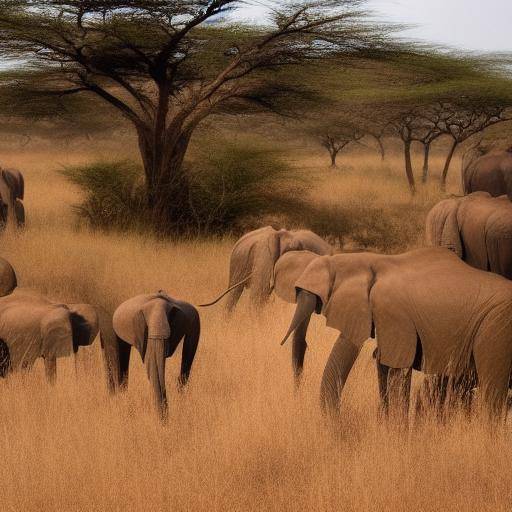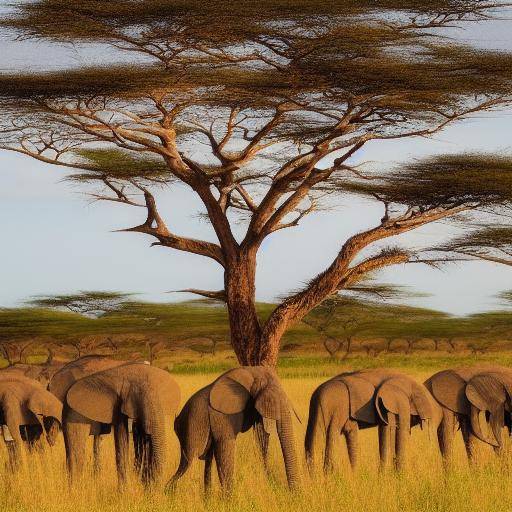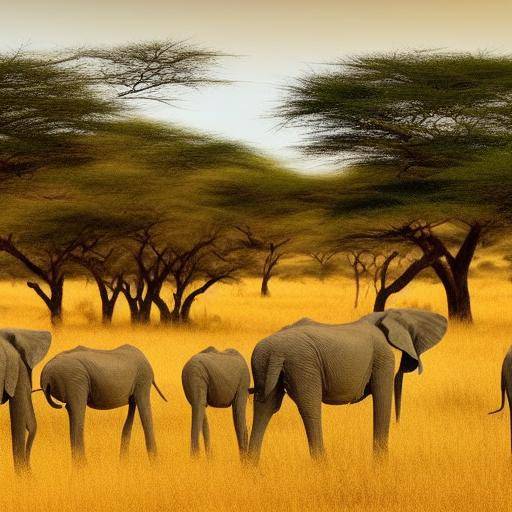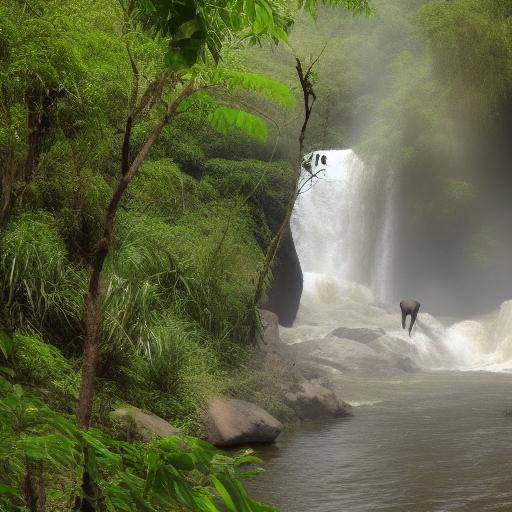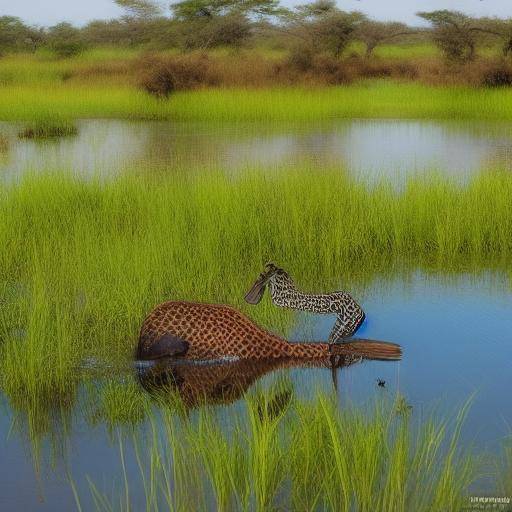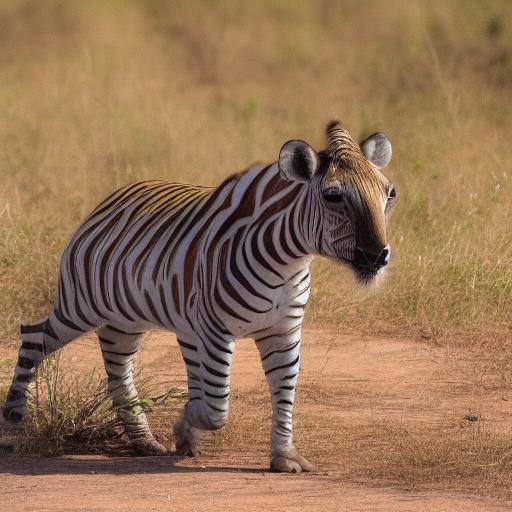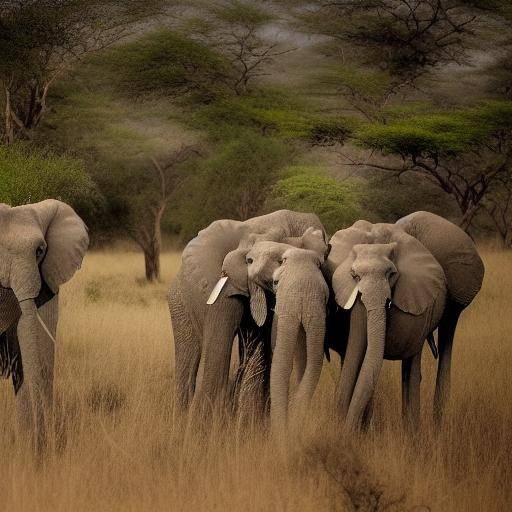
Photo safaris in Kenya offer a unique experience for lovers of African nature and fauna. Entering the national parks of this beautiful country is an opportunity to witness wildlife in its natural habitat. In this article, we will explore the rich history, the diversity of African nature and the exciting opportunities that safaris in Kenya offer to visitors.
Introduction: Exploring the Charms of Kenya
Kenya, located in East Africa, is known for its stunning landscapes, natural reserves and a rich diversity of wildlife. It is home to the popular "five bigs": lions, leopards, rhinoceros, elephants and buffaloes, as well as a multitude of other fascinating species. Photographic safaris in Kenya offer the opportunity to witness closely the majesty of these animals in their natural environment, creating memories that will last their lives.
History and Background of Safaris in Kenya
Origins and Evolution
The safaris in Kenya have a fascinating history dating back to the first 19th century European explorers and hunters, who were captivated by the country's natural wealth. At the beginning, safaris were organized hunting expeditions for the European elite. However, as the awareness of wildlife conservation grew, safaris evolved into observation trips focused on preservation and respect for local fauna.
Impact of Ecotourism
The growing awareness of the importance of the preservation of the environment has led to a renewed approach to conservation and ecotourism in Kenyan national parks. This change has promoted the protection of natural habitats and has fostered sustainable practices that benefit both local fauna and human communities that depend on tourism.
The Charm of African Nature in Kenya
Landscape Diversity
African nature in Kenya is a wonder for the senses. From the vast plains of the Masai Mara to the dense jungles of Mount Kenya, the national parks offer an incomparable diversity of landscapes and wildlife. Each region has a unique ecosystem, providing diverse habitats for a multitude of animal and plant species.
Iconica Wildlife
Kenya is home to a rich variety of fauna, including the "big five": elephants, lions, leopards, rhinoceros and buffaloes. In addition, visitors can observe elegant giraffes, zebras, guepardos, hippos, crocodiles and an amazing diversity of birds. The interaction of these species in their natural environment provides countless photographic opportunities.
Featured National Parks for Photographic Safaris
Masai Mara National Park
The Masai Mara is perhaps the most famous park in Kenya, known for its great annual migration of luus and zebras, one of the most impressive shows of nature. In addition to migration, the park has a large population of predators such as lions, ghettos and leopards.
Parque Nacional de Ambaseli
Located at the foot of Mount Kilimanjaro, the Parque Nacional de Ambaseli is famous for its large herds of elephants and the iconic views of the Kilimanjaro. Photo safaris here offer the opportunity to capture stunning wildlife scenes with the majestic mountain as a backdrop.
Tsavo National Park
The Tsavo National Park, divided into Tsavo Este and Tsavo West, is one of the largest parks in Kenya. It is known for its varied geography, which includes rivers, hills, plains and extinct volcanoes. The rich diversity of fauna includes lions, elephants, rhinoceros and a lot of birds.
Nakuru Lake National Park
Famous for its huge bands of pink flamingos, Lake Nakuru National Park offers a spectacular setting for bird photography. In addition to flamingos, the park houses white and black rhinoceros, Rothschild giraffes and numerous species of birds and mammals.
Tips for an Exitoso Photo Safari
Preparation and Equipment
- Camera and Adequate lenses: It uses a DSLR or mirrorless camera with remote lenses to capture images of animals away. A wide-angle lens is also useful for landscapes.
- Stability: Take a tripod or monopié to ensure stable photos, especially in low-light conditions.
- Equipment protection: Use waterproof covers and protective bags to protect your equipment from dust and moisture.
Knowing Animal Behavior
- Patience and observation: Wild life is unpredictable. Be patient and spend time observing the behavior of animals to capture unique moments.
- Experienced guides: Hire experienced local guides that know well the behavior of fauna and the best places for observation.
Respect Nature
- Keep the Distance: Don't get too close to the animals. Use long-range lenses to photograph without disturbing your natural behavior.
- Respect the Rules: Follow all the rules of the park and the guides' indications to ensure a safe and respectful experience with wildlife.
Impact of Tourism on Conservation
Sustainable tourism in Kenya's national parks plays a crucial role in wildlife conservation. The income generated by tourism is used to finance conservation, research and community development programmes. By participating in photo safaris and supporting ecotourism, visitors contribute directly to the protection of these vital ecosystems.
Conclusion
Photo safaris in Kenya offer an incomparable experience for nature and photography lovers. The rich diversity of wildlife, the stunning landscapes and the opportunity to capture unique moments make these safaris an unforgettable adventure. By respecting nature and supporting ecotourism, visitors not only enjoy the beauty of Kenya, but also contribute to the preservation of their precious wildlife.
FAQs
1. What is the best time of the year to make a photo safari in Kenya?
The best time for safaris in Kenya is during the dry season, from June to October, when wildlife is concentrated around water sources and is easier to observe.
2. What photographic equipment is essential for a safari in Kenya?
A DSLR or mirror-free camera with remote lenses (200-400 mm) is recommended to capture distant animals, a wide-angle lens for landscapes and a tripod or monopié for stability.
3. Is it safe to make a safari in Kenya?
Yes, safaris in Kenya are generally safe when performed with certified tourist operators and the instructions of local guides are followed.
4. How can I support conservation while enjoying a safari?
Choose tour operators to practice sustainable ecotourism, respect the park's standards and contribute to local conservation programs.
5. What should I wear in a photo safari?
It wears comfortable clothes and neutral colors, sun protection, insect repellent, binoculars, and enough memory and batteries for your photographic equipment.

